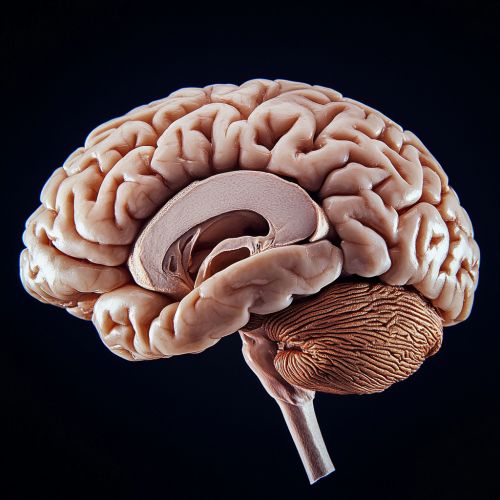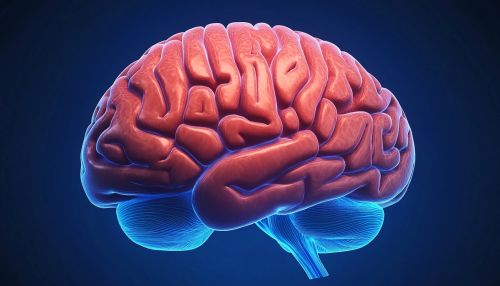Supplementary motor area
Introduction
The supplementary motor area (SMA) is a part of the cerebral cortex that contributes to the control of movement. It is located on the medial aspect of the frontal lobe, anterior to the primary motor cortex. The SMA plays a crucial role in the planning and coordination of complex movements, particularly those that involve sequences of actions or bilateral coordination.
Anatomy
The SMA is situated in the superior frontal gyrus, extending from the medial surface of the hemisphere. It is anatomically divided into two distinct regions: the pre-SMA and the SMA proper. The pre-SMA is located anteriorly and is involved in higher-order motor planning and cognitive aspects of motor control, while the SMA proper is located posteriorly and is more directly involved in the execution of motor tasks.


Connectivity
The SMA has extensive connections with various regions of the brain. It receives input from the prefrontal cortex, which is involved in decision-making and executive functions, and from the parietal cortex, which processes sensory information. The SMA also has reciprocal connections with the primary motor cortex and the basal ganglia, which are essential for the execution and modulation of movements. Additionally, the SMA projects to the spinal cord, influencing motor neurons that control voluntary movements.
Function
The primary function of the SMA is to facilitate the planning and coordination of complex movements. It is particularly involved in the initiation of movements that require a sequence of actions, such as playing a musical instrument or typing on a keyboard. The SMA is also crucial for bimanual coordination, where both hands are used simultaneously to perform a task.
Motor Planning
The SMA is activated during the planning phase of movement, even before the actual execution of the movement. This suggests that the SMA is involved in the mental rehearsal of actions, allowing for smooth and coordinated execution. Studies using functional magnetic resonance imaging (fMRI) have shown increased activity in the SMA during tasks that require the planning of complex sequences of movements.
Bimanual Coordination
The SMA plays a key role in coordinating movements that involve both hands. Lesions in the SMA can result in deficits in bimanual coordination, making it difficult for individuals to perform tasks that require the simultaneous use of both hands. This is because the SMA integrates information from both hemispheres of the brain, ensuring that movements are synchronized and coordinated.
Motor Imagery
Motor imagery, the mental simulation of movement without actual execution, also activates the SMA. This suggests that the SMA is involved in the cognitive aspects of motor control, allowing individuals to mentally rehearse movements before performing them. Motor imagery is often used in sports and rehabilitation to improve motor performance and recovery.
Clinical Significance
Lesions or dysfunctions in the SMA can lead to various motor deficits and neurological disorders. One of the most well-known conditions associated with SMA dysfunction is supplementary motor area syndrome, which is characterized by a temporary loss of voluntary movement (akinesia) and difficulty in initiating movements (apraxia).
Supplementary Motor Area Syndrome
Supplementary motor area syndrome typically occurs after surgical resection of tumors or lesions in the SMA. Patients with this syndrome often experience a transient period of akinesia and apraxia, which gradually improves over time. The recovery process is thought to be due to the plasticity of the brain, where other regions compensate for the loss of function in the SMA.
Parkinson's Disease
The SMA is also implicated in Parkinson's disease, a neurodegenerative disorder characterized by bradykinesia (slowness of movement), rigidity, and tremors. In Parkinson's disease, there is a disruption in the basal ganglia-SMA circuitry, leading to impaired motor planning and execution. Deep brain stimulation (DBS) of the subthalamic nucleus, a part of the basal ganglia, has been shown to improve motor symptoms in Parkinson's disease by modulating the activity of the SMA.
Epilepsy
Epileptic seizures originating from the SMA are known as supplementary motor area seizures. These seizures often involve complex motor behaviors, such as repetitive movements or posturing, and can spread to other motor regions, leading to generalized convulsions. Surgical resection of the epileptic focus in the SMA can be an effective treatment for patients with medically refractory epilepsy.
Research and Future Directions
Ongoing research aims to further elucidate the role of the SMA in motor control and its involvement in neurological disorders. Advances in neuroimaging techniques, such as fMRI and magnetoencephalography (MEG), are providing new insights into the functional connectivity and dynamics of the SMA. Additionally, non-invasive brain stimulation techniques, such as transcranial magnetic stimulation (TMS) and transcranial direct current stimulation (tDCS), are being explored as potential therapeutic interventions for enhancing motor function and recovery in patients with SMA-related deficits.
